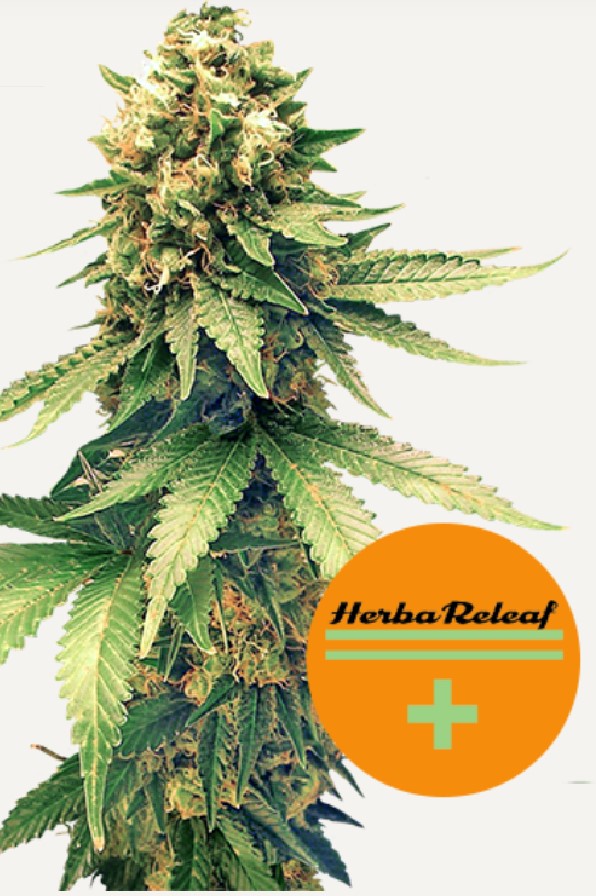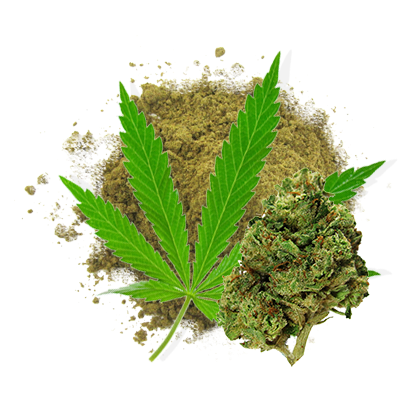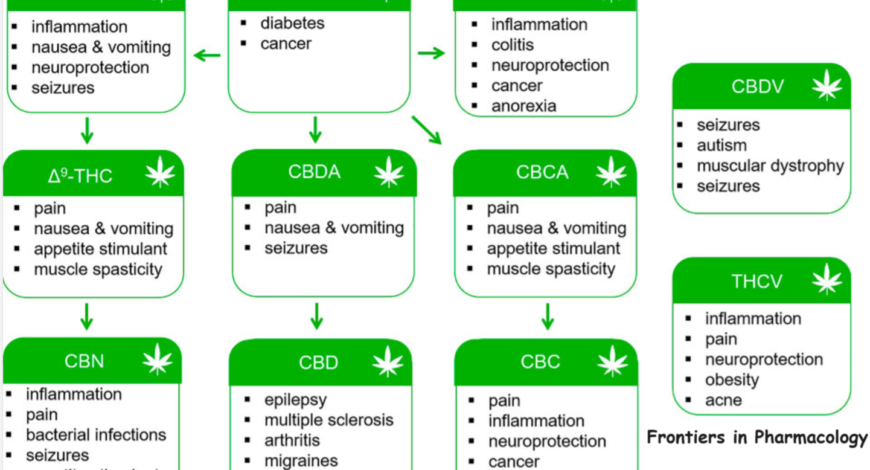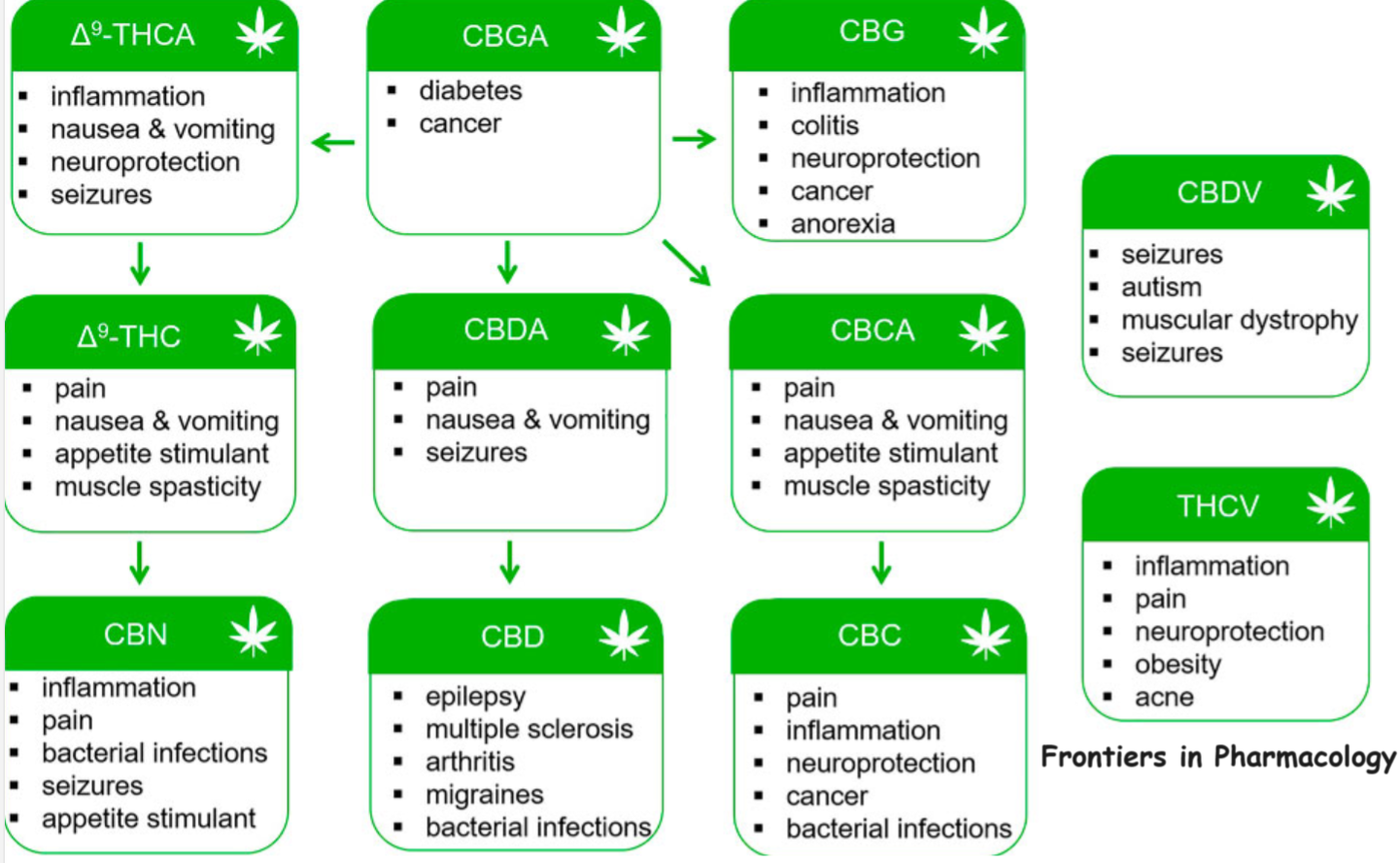The Cannabis Hemp plant, part of the Cannabaceae flowering plant family, has long been revered for its potential medicinal properties. In recent years, the world of cannabis and hemp research has expanded beyond the well-known cannabinoids like THC and CBD. While the spotlight typically shines on the more well known cannabinoids like THC and CBD, a spotlight now shines on minor cannabinoids, the unsung heroes of these plants. These lesser known compounds that contribute to the entourage effect and play a crucial role in maintaining balance and homeostasis in the human body are: CBC, CBCV, CBD, CBDV, CBG, CBL, CBN, and CBT.

Each minor cannabinoid is gaining recognition for their potential health benefits and unique interactions within the human body. How they work together to create a harmonious symphony within our endocannabinoid system along with the promising avenues of research in this field is certainly exciting to reveal. Let’s explore how the human body interacts with these minor cannabinoids and their interesting purposes and potential wellness benefits. Understanding how the human body interacts with these minor cannabinoids is just the beginning. Ongoing research seeks to uncover their full therapeutic potential and how they work together synergistically, a phenomenon known as the entourage effect. As we continue to unravel the intricate dance between our bodies and these compounds, we may unlock new avenues for addressing a wide range of health issues.
Understanding the Endocannabinoid System
Before delving into the specific interactions, it’s essential to grasp the role of the endocannabinoid system (ECS) in the human body. The ECS is a complex network of receptors, enzymes, and endocannabinoids (produced naturally by the body) that plays a pivotal role in maintaining homeostasis. When the body experiences imbalances or stressors, the ECS is activated to restore equilibrium. When there is an imbalance or stressor in the body, such as inflammation or pain, the ECS is activated to restore stability. It does this by influencing various physiological processes and helping the body adapt to changing conditions. To ensure that the ECS remains finely tuned and balanced, the body employs enzymes that break down endocannabinoids once they have fulfilled their role. Two key enzymes responsible for this process are fatty acid amide hydrolase (FAAH), which breaks down anandamide, and monoacylglycerol lipase (MAGL), which breaks down 2-AG.
The Symphony of Balance
Each of these minor cannabinoids, CBC, CBCV, CBDV, CBG, CBL, CBN, and CBT, plays a unique instrument in the symphony of homeostasis within the human body. Their collective action, often referred to as the entourage effect, suggests that these compounds work together synergistically, amplifying their therapeutic potential. This complex interplay ensures that our endocannabinoid system remains finely tuned, helping us achieve and maintain balance in the face of various stressors and challenges. Our Ultimate Full Spectrum Hemp Gummies have these minor cannabinoids and the two major cannabinoids, 10mg Delta 9 THC and over 40mg Full Spectrum CBD ensuring to deliver a full spectrum of minor and major cannabinoids found in the Hemp plant!
The Symphony of Minor Cannabinoids
- Cannabichromene (CBC): – CBC, is a non-psychoactive cannabinoid found in cannabis. Unlike THC, it does not bind directly to cannabinoid receptors but interacts with them indirectly. CBC has demonstrated potential anti-inflammatory, anti-fungal, and anti-cancer properties It works alongside other cannabinoids to modulate the body’s inflammatory response, contributing to overall homeostasis. CBC interacts with the ECS by binding to CB1 and CB2 receptors, although not as strongly as THC or CBD. It’s known for its potential anti-inflammatory and neuroprotective properties.
National Library of Medicine – https://pubchem.ncbi.nlm.nih.gov/compound/Cannabichromene
Wikipedia – https://en.wikipedia.org/wiki/Cannabichromene
- Cannabichromevarin (CBCV): – CBCV is another non-psychoactive cannabinoid that shares structural similarities with both CBC and CBD. While research on CBCV is in its infancy, preliminary studies suggest that it may have anticonvulsant and anti-inflammatory properties, making it a potential player in the quest for bodily balance. CBCV is structurally similar to CBC and CBD. While research is ongoing, it’s believed to have anticonvulsant and anti-inflammatory properties, suggesting a potential role in managing various health conditions.
National Library of Medicine – https://pubchem.ncbi.nlm.nih.gov/compound/Cannabichromevarin
Wikipedia – https://en.wikipedia.org/wiki/Cannabichromevarin
- Cannabidiol (CBD): – CBD has gained significant attention in recent years for its therapeutic potential. This non-intoxicating cannabinoid interacts with the endocannabinoid system by modulating receptors like CB1 and CB2. CBD’s diverse range of effects includes pain relief, anxiety reduction, and anti-inflammatory properties, contributing to a balanced state of well-being. CBD is perhaps the most famous minor cannabinoid, renowned for its versatile therapeutic properties. It interacts with CB1 and CB2 receptors, among others, influencing pain perception, anxiety, and inflammation.
National Library of Medicine – https://pubchem.ncbi.nlm.nih.gov/compound/Cannabidiol
Wikipedia – https://en.wikipedia.org/wiki/Cannabidiol
- Cannabidivarin (CBDV): – CBDV is closely related to CBD and is being investigated for its potential in treating conditions like epilepsy and autism spectrum disorders. Like other cannabinoids, CBDV appears to exert its effects through various receptors, including those outside the endocannabinoid system, suggesting a broader role in maintaining bodily equilibrium. CBDV’s interaction with the ECS is still being explored, but it shows promise in managing epilepsy and various neurological disorders.
National Library of Medicine – https://pubchem.ncbi.nlm.nih.gov/compound/Cannabidivarin
Wikipedia – https://en.wikipedia.org/wiki/Cannabidivarin
- Cannabigerol (CBG): – Cannabigerol, or CBG, is often referred to as the “stem cell” of cannabinoids because it is the precursor to other cannabinoids. Research has shown CBG to have potential antibacterial, neuroprotective, and appetite-stimulating properties. Its multifaceted nature contributes to the overall symphony of balance within the body. CBG is often called the “stem cell” of cannabinoids due to its role as a precursor. It interacts with both CB1 and CB2 receptors and has demonstrated potential as an antibacterial and anti-inflammatory agent.
National Library of Medicine – https://pubchem.ncbi.nlm.nih.gov/compound/Cannabigerol
Wikipedia – https://en.wikipedia.org/wiki/Cannabigerol
- Cannabicyclol (CBL): – CBL is a lesser-known cannabinoid with limited research. Its exact role within the endocannabinoid system is not yet fully understood, but it is believed to have some potential in pain management and neuroprotection. Continued research may uncover its specific contributions to homeostasis. Research on CBL is limited, but it may play a role in pain management and neuroprotection. Its precise interactions within the ECS require further investigation.
National Library of Medicine – https://pubchem.ncbi.nlm.nih.gov/compound/Cannabicyclol
Wikipedia – https://en.wikipedia.org/wiki/Cannabicyclol
- Cannabinol (CBN): – CBN is a minor cannabinoid that forms as THC ages. While it does not possess the psychoactive properties of THC, it is believed to have potential sedative effects. CBN’s interaction with the endocannabinoid system may contribute to sleep regulation and relaxation, further supporting the body’s equilibrium. CBN is formed as THC ages, and while it doesn’t produce intoxication, it may have sedative effects. Its interaction with the ECS is believed to contribute to sleep regulation.
National Library of Medicine – https://pubchem.ncbi.nlm.nih.gov/compound/Cannabinol
Wikipiedia – https://en.wikipedia.org/wiki/Cannabinol
- Cannabitriol (CBT): – Cannabitriol, or CBT, is one of the lesser-known cannabinoids, and research on its effects is limited. Preliminary studies suggest that it may have anticonvulsant properties. However, much more research is needed to understand CBT’s role in maintaining homeostasis fully. CBT is another lesser-known cannabinoid with potential anticonvulsant properties. Research is ongoing to elucidate its precise mechanisms of action.
National Library of Medicine – https://pubchem.ncbi.nlm.nih.gov/compound/Cannabitriol
Wikipedia – https://en.wikipedia.org/wiki/Cannabitriol
While THC and CBD undoubtedly deserve their place in the spotlight, the world of minor cannabinoids offers a rich tapestry of therapeutic potential. CBC, CBCV, CBD, CBDV, CBG, CBL, CBN, and CBT each bring their unique melodies to the orchestra of homeostasis, working in harmony to support our overall well-being. As research in this field continues to evolve, we can look forward to a more nuanced understanding of how these cannabinoids contribute to the intricate dance of balance within the human body.
The world of minor cannabinoids in the Cannabis Hemp plant is a fascinating frontier in the realm of medical research. These compounds, like CBC, CBCV, CBD, CBDV, CBG, CBL, CBN, and CBT, offer promising therapeutic possibilities by interacting with our endocannabinoid system to restore balance and harmony in the face of various health challenges. As science continues to shine a spotlight on these unsung heroes, the future holds great potential for innovative treatments and improved well-being. Stay tuned for exciting developments in this ever-evolving field. HerbaReleaf’s Ultra Full Spectrum gummies with both major and minor cannabiniods, will deliver the entourage effect for your needs. With 10mg of Delta 9 THC and over 40mg of full spectrum CBD, your entourage effect experience awaits!








